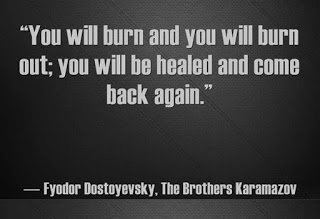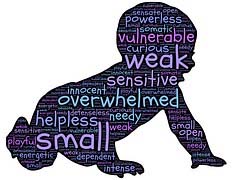Were the HIroshima and Nagasaki Bombings Good News?
so that the proof of your faith, being more precious than gold which is perishable, even though tested by fire, may be found to result in praise and glory and honor at the revelation of Jesus Christ; 1 Peter 1:7
Seventy-years-ago, the world blew up–almost literally.
| The atomic bombings of Hiroshima and Nagasaki killed tens of thousands of Japanese civilians. (Photo credit: Wikipedia) |
On August 6, 1945 Hiroshima exploded when the United States dropped the first atomic bomb on the unsuspecting city. However, “Little Boy” couldn’t convince the emperor to surrender, so on August 9, 1945, the United States sent a plutonium bombed nicknamed the “Fat Man” to finish the job. After the bombing of Nagasaki, World War II ended.
Was this a happy day?
Without the bombs, the war would drag on. Service men would die. Civilians would be cut down. The war could well advance onto American soil as the bombing of Pearl Harbor proved. Yet, the bomb in Hiroshima killed more than 150,000 innocent civilians. In Nagasaki, more than 80,000 lost their lives in the first few months.
The cities were wiped out. Only one building remained standing (of sorts) in Hiroshima, a memorial still in existence today.
Good news. No more war.
Bad news. So much grief.
Think of the World Trade Centers. Three thousand souls perished on that day. We still mourn.
Today we battle the advancement of nuclear weapons in unscrupulous governments. But Neil and I recently had the opportunity to visit Oak Ridge National Labs (ORNL), K-12 and the rest of the “Secret City” in Oak Ridge, Tennessee. Here they enriched uranium and made possible the creation of the atomic bomb.
Today we’re down-sizing our bombs. But what did the nuclear age do besides end a war?
- It keeps us safe. Russia or North Korea or fill-in-the-blanks, don’t attack us because we can destroy them.
- Nuclear medicine finds diseases we used to miss and allow us fuller and healthier lives.
- We can heat and cool our homes more efficiently.
- We improve the safety of food
- It helps in archaeology–think of our carbon dating
- Improves our mining abilities
- These sites in Oak Ridge have now turned to nano-technology and 3-D printing. Pull out your phone or check something on your FitBit. These came about because of the atomic age.
Of course I can answer. We’ve all face misery. Many of us have minor catastrophes, perhaps comparable to a fire that destroys our homes. On the way home from Oak Ridge, we had a minor car accident when Neil backed into a cart-gathering machine in a Wal-Mart parking lot.
Then some face extreme tragedy such as the World Trade Center episodes–devastating and debilitating. Others suffer on the scale of a Hiroshima.
God restores. From the ashes of tragedy can rise greatness.




No Comments